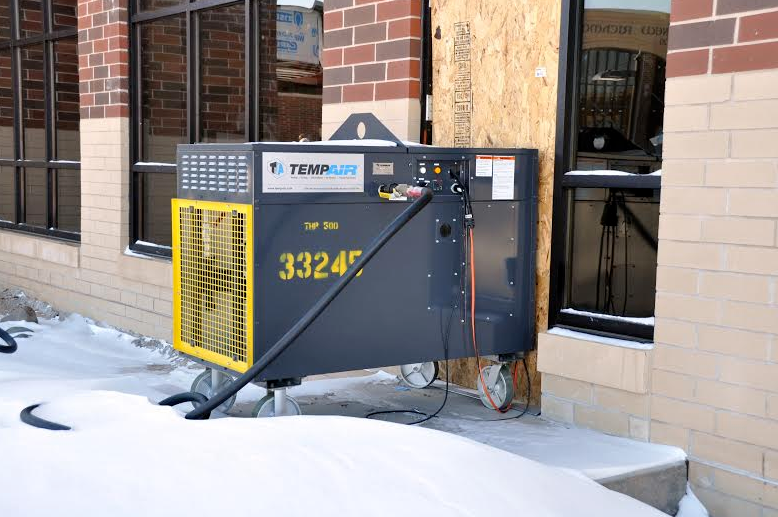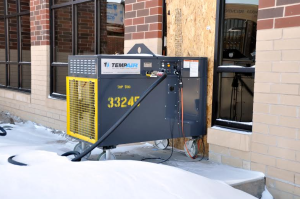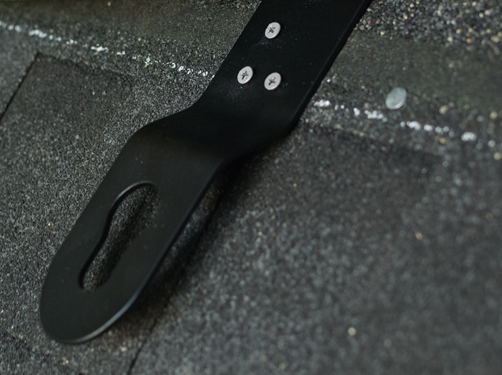During the cold winter months, construction professionals who use temporary, propane-powered heating equipment on the job site can be more productive, making it easier to finish projects on time and on budget. In addition to providing more comfortable working conditions, propane-powered heaters can also maintain the ambient temperatures necessary for common tasks like drywall installation or painting. However, like any portable heating device, propane-powered heaters must be used and maintained properly.
“Considering the cold and snowy weather that much of the country has experienced lately, it’s an ideal time to remind builders and remodelers how important it is to properly install, maintain and use propane-powered heaters,” says Bridget Kidd, director of residential and commercial programs for the Propane Education & Research Council (PERC). “By following a few simple guidelines, they can ensure optimum job site performance, comfort and safety.”
PERC offers the following advice to help construction professionals stay safe and warm this winter:
At sites using propane cylinders to power heaters:
- Ensure that propane cylinders are in good condition without bulges, dents, excessive rust or signs of fire damage.
- Always transport cylinders to the job site in an upright and secured position.
- Do not use a cylinder indoors that holds more than 100 pounds of propane.
- Connect no more than three 100-pound propane cylinders to one manifold inside a building. All manifolds should be separated by at least 20 feet of space.
- Check all cylinders for leaks with a suitable leak detector solution—not soap and water, which may have corrosive properties.
At sites using external propane tanks to power heaters:
- Locate tanks a sufficient distance from property lines and the structure under construction. Consult local building codes to ensure proper compliance.
- Place the tank on stable ground, and when locating the tank consider the potential effects of freezing and thawing.
- Use rigid piping from the tank to the building. Flexible tubing may be safely used indoors.
- Have a qualified propane technician ensure that all connections between the tank and heater are free of leaks.
- Protect tanks and piping on the work site from the possibility of vehicle impact.
- Do not store combustible material within 10 feet of any tank.
When using salamanders and other propane heaters:
- Choose a heater that’s sized appropriately for the square footage you want to heat.
- Keep heaters away from potentially combustible materials.
- Only operate heaters in ventilated areas. Make sure there’s sufficient air both for combustion and to prevent carbon monoxide accumulation.
- Use only those heaters with 100 percent safety shut-off valves.
- When the project is complete, first turn off gas at the container valve to drain hoses or pipes before shutting off the heater itself.
- Only allow a qualified LP gas technician to make any repairs to faulty equipment.
While kerosene and electric heaters are also available, propane is the cleanest and smartest fuel choice for job site heating. Kerosene heaters can produce an undesirable film on nearby equipment or walls. Electric heaters can’t generate nearly as many BTUs as propane-fueled heaters and they put additional load on the mobile generators used to produce electricity for power tools used around the job site.
“When it comes to heating a temporary construction site, and for other uses around the job site, propane’s benefits are clear,” Kidd adds. “Because it’s a low-carbon, alternative fuel, construction professionals who use propane-powered heaters, generators, light towers and other equipment can maintain a cleaner environment without sacrificing power or performance.”
For more information about the benefits of using clean, efficient propane on residential or commercial building sites, learning about new propane-powered products, or considering the financial incentives available on propane equipment purchases, visit the Build With Propane website.





Awesome list here, gonna be worrying about space heating for the next week or so while I set up a housing project. Thanks for the article, helps a lot!